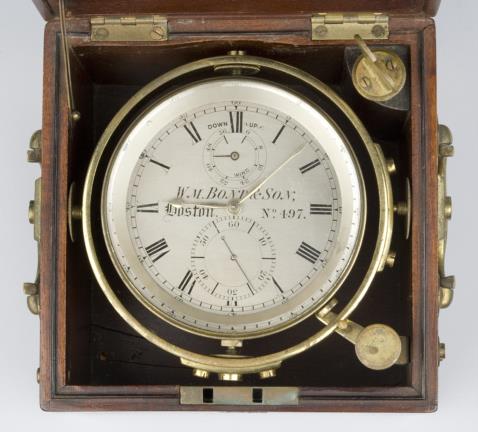
NavList:
A Community Devoted to the Preservation and Practice of Celestial Navigation and Other Methods of Traditional Wayfinding
From: Ed Popko
Date: 2022 Feb 9, 11:29 -0800
I find Time Sights very useful and easy to do with a calculator. Especially so if both Greenwich and ship’s time use the same mid-day 12:00 time keeping system.
I’m recomputing some 19th century Time Sight examples from logs and navigation texts. It’s always a challenge to get the ship’s time and on-board chronometer time in the same system prior to computing longitude.
One can assume a 3:50 log entry is p.m., a typical observation moment in a day’s work. Same for an a.m. 8:40 observation. So, morning sun rising, afternoon sun setting is obvious.
But how is the chronometer read? Let’s say it’s mechanically perfect and has the usual 12 hr face. They don’t have a.m./p.m. indicators. See attached image.
Assuming you compute the sun’s ‘t’ hour angle from your observation. With the sun’s altitude (Hs) your latitude and Polar Distance, you know the suns hour angle from your local meridian. It’s trivial to convert this hour angle to time.
But now your headache begins -- you have to make sense of the ship’s time and on-board chronometer and have them both in the same system before you can compute your longitude.
Any advice as to how to better interpret ship and chronometer time in 19th century examples? Are there things to look for that indicate what system is being used? I admit it, I make a guess at what time keeping system was being used. The longitude either makes sense or it’s way off, like in a different hemisphere. I rerun it with a different assumption if I’m wrong.
There must be a better way.







